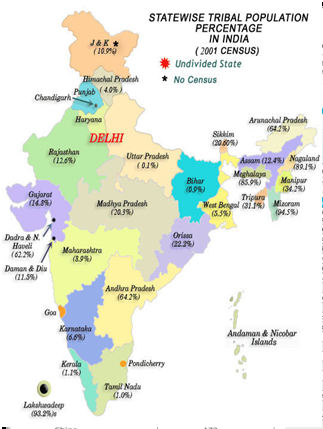LANDMARK, BENCHMARK: SC VERDICT ON SUB-CLASSIFICATION OF SCS
Relevance
- GS 2 – Polity, Social Justice
Context
- The Supreme Court’s recent ruling on the sub-classification of Scheduled Castes (SCs) is a landmark decision that aims to ensure that the benefits of reservation reach the most disadvantaged sections within the SC community.
- The verdict has significant implications for social justice and the equitable distribution of resources.
- Yogendra Yadav, Political Analyst – “The Supreme Court’s verdict on sub-classification is a landmark decision that will enable evidence-based identification of the most disadvantaged within the SC community.”
Historical Background
- Evolution of Reservation Policy:
- The concept of reservation in India was introduced to address historical injustices and provide representation to marginalized communities.
- The reservation system has evolved through various constitutional amendments and judicial interpretations, aiming to uplift the socio-economic status of SCs, Scheduled Tribes (STs), and Other Backward Classes (OBCs).
- The Issue of Sub-Classification:
- Sub-classification refers to the categorization of SCs into sub-groups to ensure that the benefits of reservation are distributed more equitably among them.
- The idea is to prevent more advanced sections within the SC community from monopolizing the benefits, leaving the most disadvantaged groups behind.
Supreme Court Verdict
- Constitutional Validity:
- The Supreme Court upheld the constitutional validity of sub-classification, recognizing it as a means to achieve substantive equality.
- The verdict emphasized that sub-classification does not violate Article 14 (Right to Equality) or Article 341 (which empowers the President to specify the SCs).
- Evidence-Based Identification:
- The Court highlighted the need for evidence-based identification of the most disadvantaged sections within the SC community.
- It directed states to conduct surveys and collect data to identify the most marginalized groups accurately.
Principles of Sub-Classification
The Supreme Court outlined key principles for sub-classification. They are:
- Constitutional Requirement: Sub-classification within a class is a constitutional requirement to secure substantive equality if there is a distinction between two sections of a class.
- Inclusiveness: Sub-classification must not lead to the exclusion of one of the categories in the class. A model that provides sufficient opportunities to all categories of the class must be adopted.
- Reasonable Basis: Sub-classification among a class must be on a reasonable basis, with a substantial difference in backwardness between the sub-categories. The Court emphasized that any sub-classification should be based on empirical data demonstrating the need for such distinctions to ensure that affirmative action benefits reach the most disadvantaged groups.
Constitutional Provisions and Equality
CJI Views The judgment authored by Chief Justice DY Chandrachud appreciates the import of distributive justice within the extremely heterogeneous Scheduled Castes. It affirms that equal protection of the law is not a rule that forbids both ‘the beggar and the king’ from begging in the streets. Dissenting Opinion
|
Implications of the Verdict
- Equitable Distribution of Benefits:
- The ruling ensures that reservation benefits are not monopolized by relatively advanced sections within the SC community.
- It aims to uplift the most disadvantaged groups, ensuring a more equitable distribution of resources and opportunities.
- Legal and Policy Framework:
- The verdict provides a robust legal framework for states to implement sub-classification policies.
- It calls for the creation of policies that are tailored to address the specific needs of the most disadvantaged sections within the SC community.
Broader Social Justice Goals
- Addressing Historical Injustices:
- Sub-classification is a step towards addressing historical injustices and ensuring that the benefits of affirmative action reach those who need them the most.
- It aligns with the broader goal of social justice by promoting inclusivity and equity within marginalized communities.
- Reducing Disparities:
- The decision is expected to reduce intra-community disparities, fostering unity and cohesion within the SC community.
- By ensuring that the most disadvantaged sections receive their due share of benefits, the verdict promotes balanced socio-economic development.
Case Studies
- Tamil Nadu’s Sub-Classification Model:
- Tamil Nadu has successfully implemented sub-classification within the SC community, resulting in more equitable distribution of reservation benefits.
- The state’s model can serve as a reference for other states looking to implement similar policies.
- Punjab’s Efforts:
- Punjab has also undertaken efforts to identify the most disadvantaged sections within the SC community and tailor policies to meet their needs.
- The state’s experience highlights the importance of data-driven policy-making in achieving social justice.
Statistical Data
- Census Data: The 2011 Census revealed significant disparities within the SC community, with some sub-groups being more socio-economically advanced than others. Sub-classification aims to address these disparities.
- Education and Employment: Studies have shown that sub-groups within the SC community have varying levels of access to education and employment opportunities. The verdict seeks to ensure that the most disadvantaged groups receive adequate support.
- NOTE: Union Budget 2023-24 allocated significant funds for the development of SC communities, emphasizing the need for targeted interventions to uplift the most disadvantaged groups.
Conclusion
The Supreme Court’s verdict on the sub-classification of SCs is a significant step towards achieving substantive equality and social justice. By ensuring that the benefits of reservation reach the most disadvantaged sections within the SC community, the ruling promotes a more equitable distribution of resources and opportunities. It is now incumbent upon the states to implement the verdict effectively, ensuring that the principles of equity and justice are upheld.
Mains Question
Discuss the significance of the Supreme Court’s verdict on the sub-classification of Scheduled Castes (SCs). How does it contribute to social justice and the equitable distribution of reservation benefits? (250 words)
Source: The Indian Express




